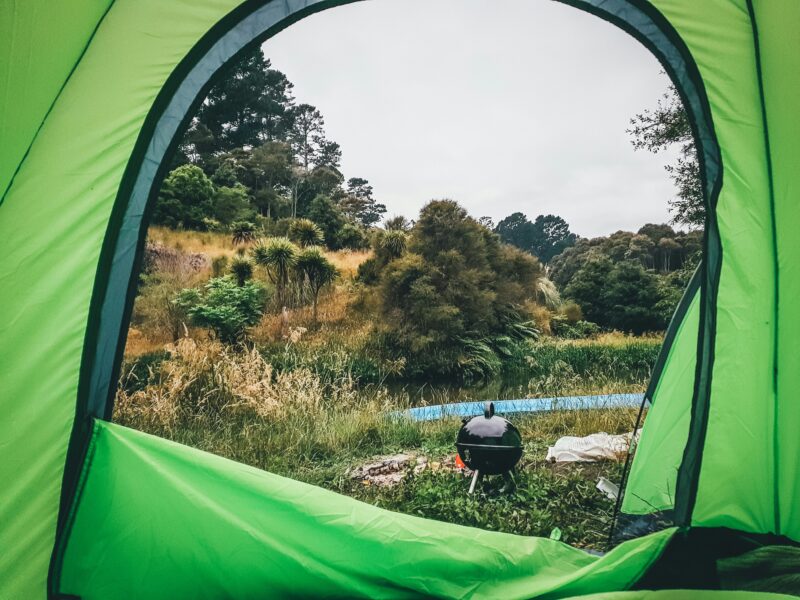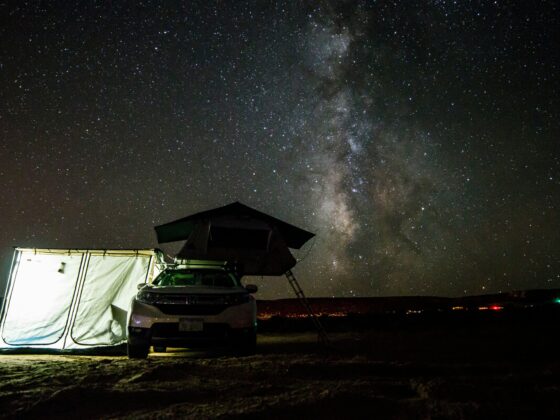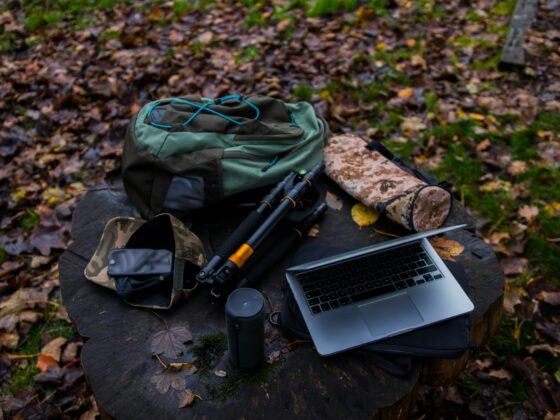Are you an avid camper who loves to explore the great outdoors? If so, you know the importance of having reliable camping equipment. However, storing camping gear in a humid climate can pose some challenges. The excessive moisture in the air can cause damage to your gear, leading to mold, mildew, and rust. Humidity can be a significant enemy when preserving the longevity and functionality of your camping equipment.
Humidity is a measure of the amount of water vapor present in the air. When the air is saturated with moisture, it can lead to various problems for your camping gear. Everything is susceptible to the damaging effects of humidity, from camping tents and sleeping bags to cooking equipment and outdoor tools. The moisture in the air can seep into the materials, causing them to deteriorate over time. This can result in the breakdown of fabrics, the corrosion of metal parts, and the growth of mold and mildew, which can not only compromise the performance of your gear but also pose health risks.
Moreover, the fluctuations in temperature and humidity levels in a humid climate can further exacerbate the problem. As the temperature changes, the air’s ability to hold moisture also shifts, leading to condensation and the formation of water droplets on the surface of your camping equipment. This cycle of moisture absorption and evaporation can accelerate the deterioration of your gear, making it essential to effectively address the challenges of storing camping equipment in a humid climate.
Challenges of storing camping equipment in a humid climate
Storing camping equipment in a humid climate presents a unique challenge that requires careful consideration. One of the primary challenges is the risk of mold and mildew growth. The damp environment created by the high humidity levels provides the perfect breeding ground for these fungal organisms, which can quickly spread and compromise the integrity of your camping gear.
Another challenge is the potential for rust and corrosion on metal parts, such as zippers, buckles, and frames. The moisture in the air can cause these components to oxidize, leading to a gradual breakdown of the material and a decrease in the overall functionality and lifespan of your equipment.
The humid climate can also cause fabrics, such as tent materials and sleeping bag liners, to become damp and musty. This can lead to a breakdown of the fibers, making the materials less durable and less effective at providing the necessary insulation and protection during outdoor adventures.
Storing camping equipment in a humid climate also presents logistical challenges. Finding the right storage location to maintain a consistent, low-humidity environment can be daunting, especially in areas with high humidity levels throughout the year. Failure to properly store your gear can result in a significant investment of time and money to replace damaged or unusable items.
Common problems faced when storing camping equipment in a humid climate
-
Mold and mildew
One of the most common problems faced when storing camping equipment in a humid climate is the growth of mold and mildew. The damp environment created by the high humidity levels provides the perfect breeding ground for these fungal organisms, which can quickly spread and compromise the integrity of your camping gear.
Mold and mildew can discolor and stain fabrics, causing them to become brittle and weakened over time. This can be particularly problematic for items like tents, sleeping bags, and backpacks, where the structural integrity of the materials is crucial for their performance and durability. Also, mold and mildew can pose health risks, as they can trigger allergic reactions and respiratory issues in some individuals.
-
Corrosion and rusting
Another common problem is the corrosion and rusting of metal components, such as zippers, buckles, and frames. The moisture in the air can cause these parts to oxidize, leading to a gradual breakdown of the material and a decrease in the overall functionality and lifespan of your equipment. This can be especially problematic for items like camp stoves, cookware, and outdoor tools, where the metal components are essential for proper operation.
-
Damp and mustiness
Damp and musty fabrics are also common when storing camping equipment in a humid climate. The high moisture levels can cause the materials to become damp and heavy, compromising their insulating properties and making them less effective at providing the necessary protection during outdoor adventures. This can be a significant problem for items like sleeping bags, tents, and backpacks, where the fabrics play a crucial role in their performance.
Tips for preventing moisture damage to camping equipment
Preventing moisture damage to your camping equipment in a humid climate is crucial for ensuring its longevity and reliability.
1. Choose suitable storage containers or enclosures
Airtight, waterproof containers, such as plastic bins or heavy-duty storage bags, which can often be bought at an outdoor store, can help create a barrier against the humid air, preventing moisture from seeping into your gear.
2. Clean and dry thoroughly before storage
Remove any dirt, debris, or residual moisture, as these can provide the perfect environment for mold and mildew growth. Be sure to air out and dry your gear completely before packing it away, as any remaining moisture can lead to the development of these harmful fungi.
3. Utilize moisture-absorbing products
Some examples are silica gel packets or desiccant bags, which can also be a game-changer when protecting your camping gear. These products work by drawing in excess moisture from the air, helping to maintain a dry and safe environment for your equipment. Replace or reactivate these products regularly to ensure their continued effectiveness.
4. Choose the right storage location
Avoid areas with high humidity levels, such as basements, attics, or garages, and instead opt for a cool, dry, and well-ventilated space. Proper air circulation can help prevent moisture buildup and reduce the risk of mold and mildew growth.
Choosing the right storage location for camping gear in a humid climate
When it comes to storing camping equipment in a humid climate, the choice of storage location is crucial. Ideally, you want to find a space that maintains a consistent, low-humidity environment to protect your gear from the damaging effects of moisture.
One of the best options is a climate-controlled storage unit or a dedicated storage room within your home. These spaces are designed to regulate temperature and humidity levels, creating an ideal environment for your camping equipment. Controlling the environmental conditions can significantly reduce the risk of mold, mildew, and rust formation.
If a climate-controlled storage option is unavailable, consider a dry, well-ventilated area, such as a spare bedroom, closet, or even a shed or garage that has been properly insulated and sealed. Ensure that the space is free from any sources of moisture, such as leaks or high humidity levels, and provide adequate air circulation to maintain a dry environment.
It’s also important to avoid storing your camping gear in damp or humid areas, such as basements or attics, as these spaces are more prone to moisture buildup. Additionally, be mindful of seasonal changes in humidity levels and adjust your storage location accordingly. For example, you may need to move your camping equipment to a different area during the wetter months to ensure optimal protection.
Essential camping equipment maintenance tips for humid climates
Maintaining your camping equipment in a humid climate requires a proactive approach to ensure its longevity and performance. One of the most important steps is to thoroughly clean and dry your gear after each use before storing it away.
Start by removing any dirt, debris, or residual moisture from your camping equipment. This includes wiping down the exterior of tents, cleaning cooking utensils, and airing out sleeping bags and other fabric items. Ensure that everything is completely dry before packing it away, as even the slightest moisture can lead to the growth of mold and mildew.
Another essential maintenance tip is to regularly inspect your camping gear for any signs of damage or deterioration. Look for issues such as rips, tears, or worn-out components and address them promptly. This not only preserves the functionality of your equipment but also helps prevent further damage caused by the humid environment.
When cleaning and maintaining your camping gear, be sure to use the appropriate cleaning products and techniques. Avoid harsh chemicals or abrasive materials that could damage delicate fabrics and materials. Instead, opt for mild, specialized cleaners designed for outdoor equipment and follow the manufacturer’s instructions carefully.
Recommended storage solutions for camping equipment in a humid climate
Investing in the proper storage solutions is crucial for protecting your camping equipment in a humid climate. One of the most effective options is to use airtight, waterproof containers, such as plastic bins or heavy-duty storage bags. These containers create a barrier against the humid air, preventing moisture from seeping into your gear and causing damage.
When selecting storage containers, look for ones made of durable, moisture-resistant materials, such as polypropylene or polyethylene. Avoid containers with gaps or openings that could allow air and moisture to penetrate. Additionally, consider using containers with gasket-sealed lids or zippered closures to ensure a tight seal.
Another recommended storage solution is to use vacuum-sealed bags or compression storage bags. These specialized bags, available at camping equipment stores, use suction to remove excess air and compress your camping gear, creating a compact and moisture-free environment. This helps protect your equipment and saves valuable storage space, making it easier to organize and store your camping gear.
Consider investing in storage containers with built-in dehumidifiers or silica gel packs for larger or bulkier items, such as tents or sleeping bags. These storage solutions actively work to absorb moisture, further safeguarding your gear against the damaging effects of humidity. Remember to regularly check and replace the dehumidifying agents to maintain their effectiveness.
DIY methods for reducing moisture in camping gear storage
If you’re looking for more budget-friendly options to combat the challenges of storing camping equipment in a humid climate, there are several DIY methods you can explore. One effective solution is to use silica gel packets or desiccant bags designed to absorb excess moisture from the air.
You can purchase silica gel packets or make your own desiccant bags by filling small cloth pouches with silica gel beads. These can be placed inside your storage containers or with your camping gear to help maintain a dry environment. Be sure to replace or reactivate the desiccant regularly to ensure it continues to be effective.
Another DIY method is to use activated charcoal as a natural moisture absorber. Charcoal is highly porous and can effectively draw in and trap moisture from the air. You can place small bowls or bags of activated charcoal within your storage containers to help regulate the humidity levels.
Consider using a DIY dehumidifier for larger storage spaces, such as a shed or garage. This can be as simple as placing a bowl of calcium chloride or rock salt in the area, which will absorb moisture from the air. Alternatively, you can build a more sophisticated DIY dehumidifier using a fan, a container, and the appropriate desiccant material.
Benefits of using dehumidifiers for camping equipment storage
Dehumidifiers are one of the most effective ways to protect your camping equipment in a humid climate. Dehumidifiers actively remove excess moisture from the air, creating a dry and safe environment for your gear.
One primary benefit of using a dehumidifier for camping equipment storage is preventing mold and mildew growth. By maintaining a consistently low humidity level, dehumidifiers help inhibit the development of these harmful fungi, which can quickly compromise the integrity of your camping gear.
Dehumidifiers also help prevent the corrosion and rusting of metal components, such as zippers, buckles, and frames. By keeping the air dry, they minimize the exposure of these parts to moisture, which is the primary cause of oxidation and deterioration.
Additionally, dehumidifiers can help maintain the quality and performance of fabric-based camping equipment, such as tents, sleeping bags, and backpacks. Keeping the air dry prevents the fabrics from becoming damp and musty, ensuring that your gear remains lightweight, insulating, and effective in protecting you during your outdoor adventures.
When selecting a dehumidifier for your camping equipment storage, look for models specifically designed for use in small—to medium-sized spaces, such as storage rooms or sheds. These units are typically more energy-efficient and can effectively manage humidity levels in confined areas. Be sure to regularly maintain and clean your dehumidifier to ensure its continued effectiveness.
Conclusion: Ensuring the longevity of camping equipment in humid climates
In conclusion, storing camping equipment in a humid climate presents unique challenges. Still, with the right strategies and solutions, you can protect your valuable gear and ensure longevity. By understanding the impact of humidity on your camping equipment, implementing preventive measures, and utilizing the proper storage solutions, you can keep your gear in top condition and ready for your next outdoor adventure.



